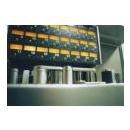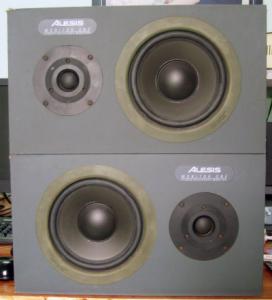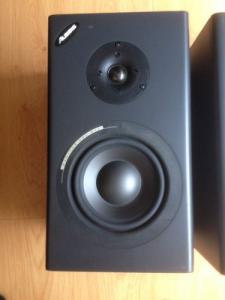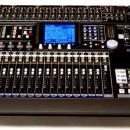#46
Hola Nachopop,
En general podríamos decir que algunos (la mayoría) fabricantes de monitores son como comentas, empresas serias que ponen en el mercado productos donde el objetivo principal es la calidad y sobre todo la mejor calidad posible dentro de un precio pero....por desgracia no todos los fabricantes tienen los mismos estándares de calidad ni tampoco todos ellos fabrican productos para el mismo publico objetivo.
Si te fijas en mis respuestas he empleado precisamente literatura de varios fabricantes (en concreto Genelec y Tannoy ambas empresas de reconocido prestigio y trayectoria) lo que viene a demostrar que lo que dices es cierto al menos en muchos casos, pero....es siempre así? ...por desgracia no.
Es en estos casos donde la lógica y los conocimientos han de prevalecer incluso sobre lo que diga el manual ya que o bien la informacion del fabricante no es del todo correcta (el mas raro de los casos) o bien es ambigua o confusa.
Un caso evidente es el de los Alesis M1 MKII donde su manual dice por un lado:
Alguien escribió:
HORIZONTAL PLACEMENT RECOMMENDATION
Traditionally, proper horizontal placement of speaker systems slightly behind(not on) a meter bridge accomplished two purposes:
it allowed both woofer and tweeter to be at ear level, and many times, it permitted the recording engineer to see over the speakers and into the studio.
Horizontal placement is a recommended arrangement with the M1 Active Mk2 because the left and right mirror-imaged pair permits a symmetrical
alignment of drivers and ports. This will be conducive to a balanced mix. See Figure 2 below.
Proper tweeter orientation is toward the stereo image center (the middle) as shown. Ports are always faced toward the bottom side of the cabinet. This set- up will promote a strongly focused center image such as for the vocalist. And because the (vocal) image width will be narrower than if the speakers are placed vertically, it will be possible to place the vocalist with great precision at stage center. In this orientation there will be much less chance of first reflections from either sidewalls or the console coloring your mix
Y a la vez lo siguiente :
Alguien escribió:
VERTICAL PLACEMENT RECOMMENDATION
Vertical placement of the M1 Active Mk2 as shown in Figure 3 is highly recommended. This position will simulate the soundfield that will be heard in most consumers’ homes and (to a great extent) their cars. For this reason, even if the M1 Active Mk2s are positioned horizontally for all of the mixing,
the vertical position should always be used in the final "playback check" mode. (See next section)
There are a couple of possible drawbacks to vertical placement of a nearfield monitor relating mostly to room interaction effects. Vertical placement allows the M1 Active Mk2s to portray your mix with the widest and deepest soundstage possible, so many people in the control room have an image of the “sweet spot”. However, this wide a dispersion pattern in a control room with walls in too-close proximity to the speakers can add strong reflections to the sound you hear, muddying your mix. Page 29 shows the control room placement/ distance recommendations, which should help you determine if your available recording space would work well with the M1 Active Mk2s set up vertically
Estos dos textos ademas de contradictorios en diversos sentidos contienen afirmaciones cuando menos cuestionables y fácilmente rebatibles
de todas formas es curios como milagrosamente en el manual de la nueva versión de los Alesis M1 es posible leer lo siguiente:
Alguien escribió:
Speaker Orientation:
The M1Active 520/620 has been designed for maximum flexibility when it comes to speaker orientation (i.e., whether the speaker is upright or laying down on its side). For best performance, place the speakers vertically with the tweeter on top.
If this is not practical in your control room, go ahead and lay each speaker on its side, but make sure the tweeters are on the “inside” and are closer to the engineer.
This will give you the best possible soundstaging for this orientation. Avoid having the tweeter on the “outside” since the added distance between the tweeters may result in a “gap” in the middle of your soundstage.
Vamos que por arte de magia lo que antes presentaba diversos problemas y complicaciones a dejado de hacerlo y ahora es la mejor posicion para obtener un buen resultado

Es evidente que los tiempos y el conocimiento van avanzando y que las empresas y diseñadores de equipos también cambian y aprenden en el trayecto pero demasiadas veces hay casos que cuando menos son "sorprendentes"

Un saludo








 ](*,)](https://statics.soniccdn.com/images/smilies/eusa_wall.gif) )
) 

